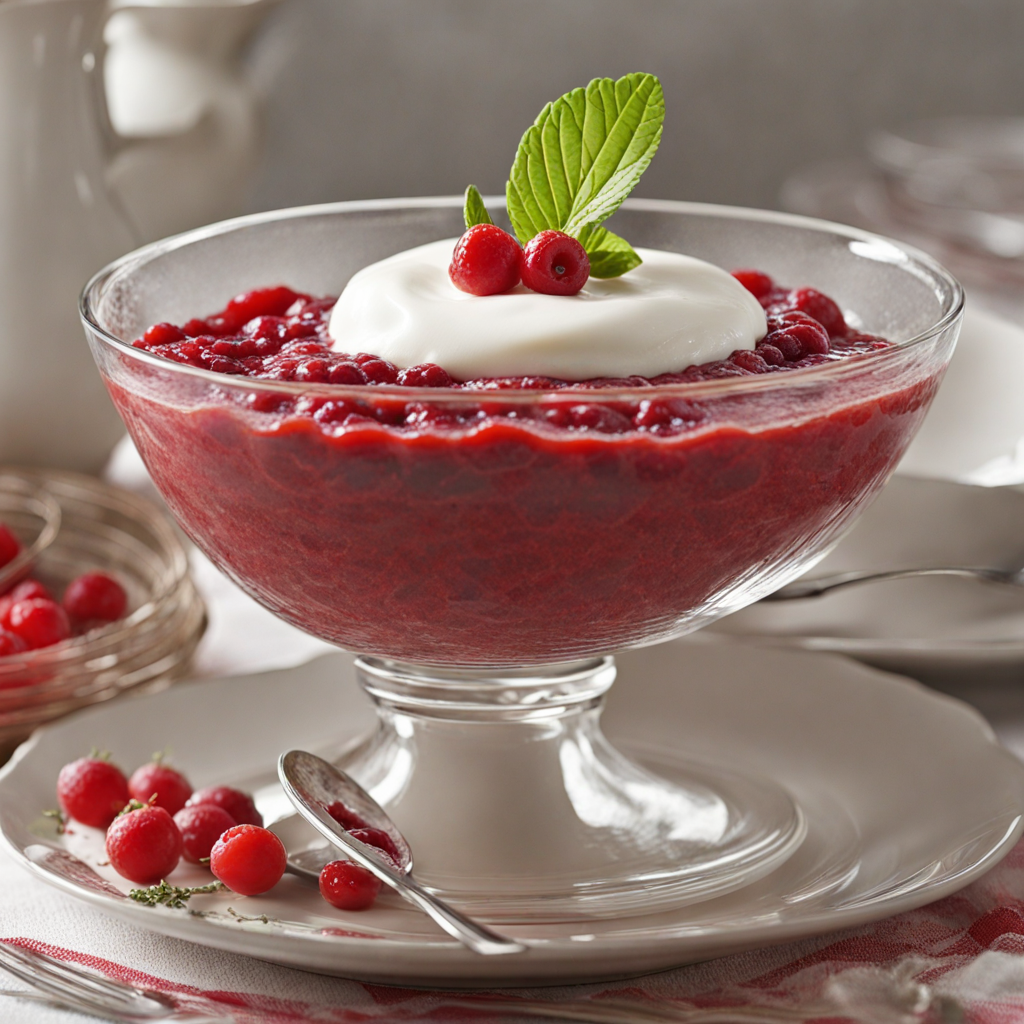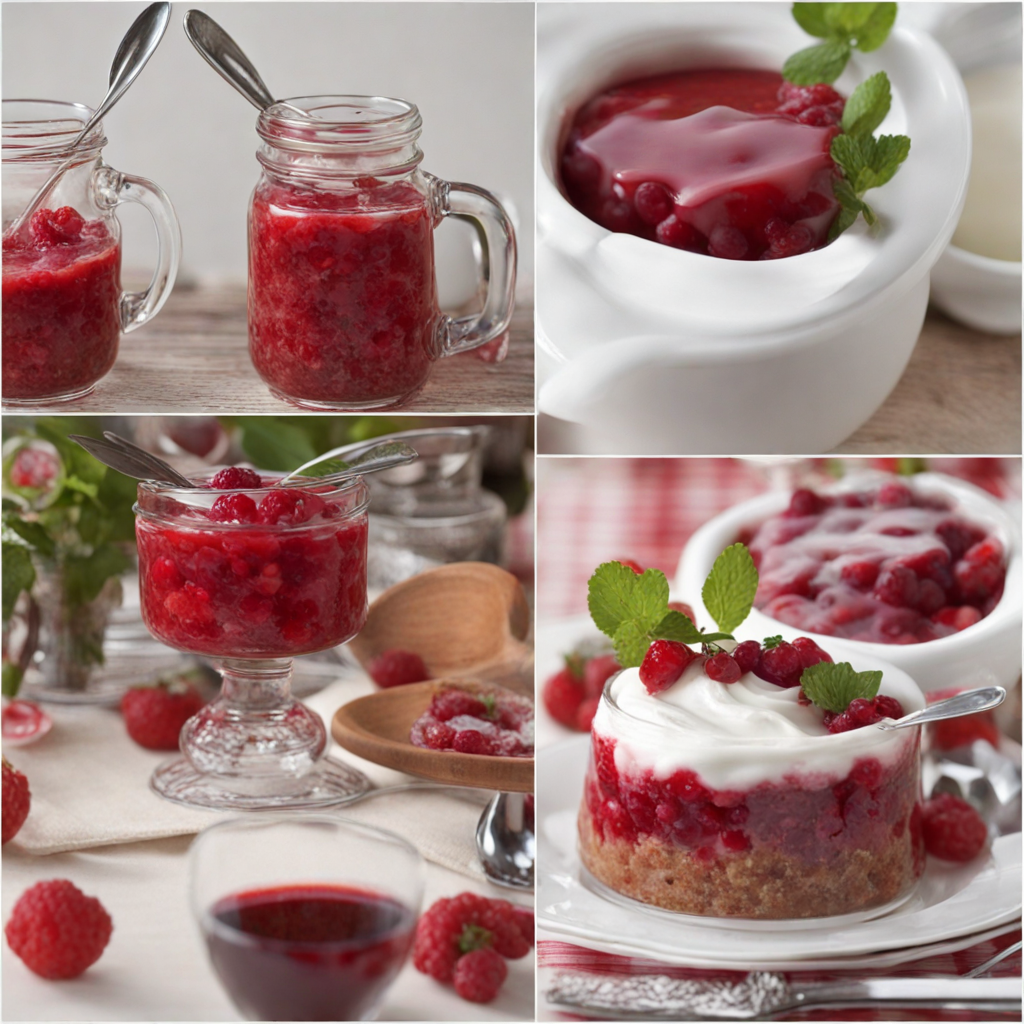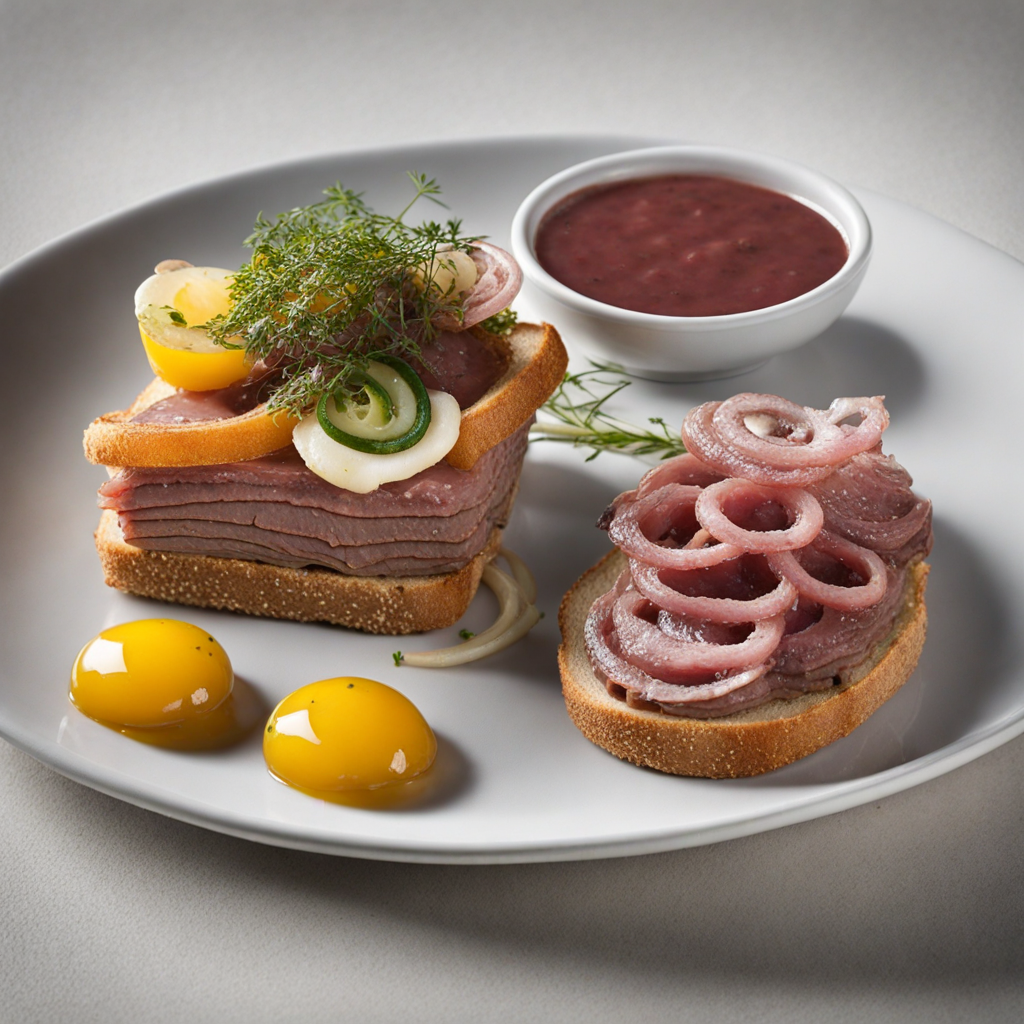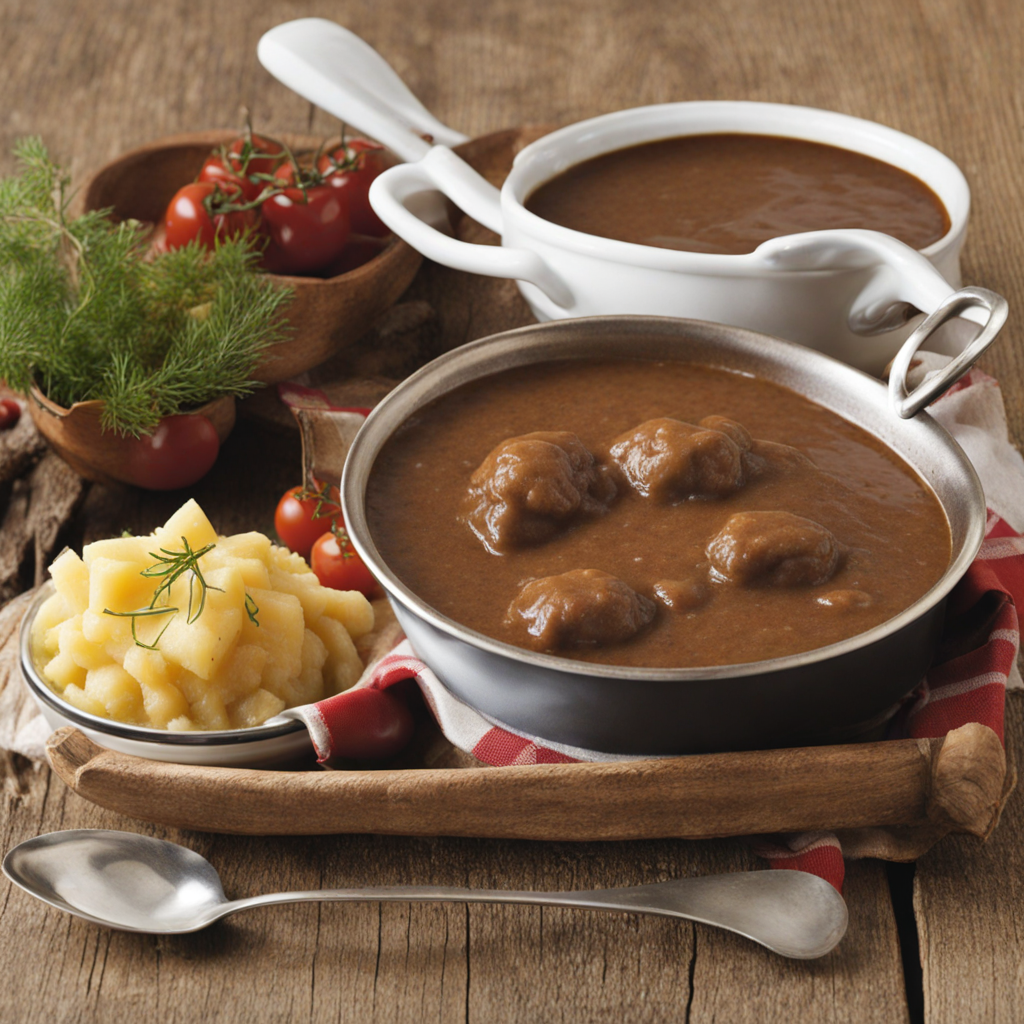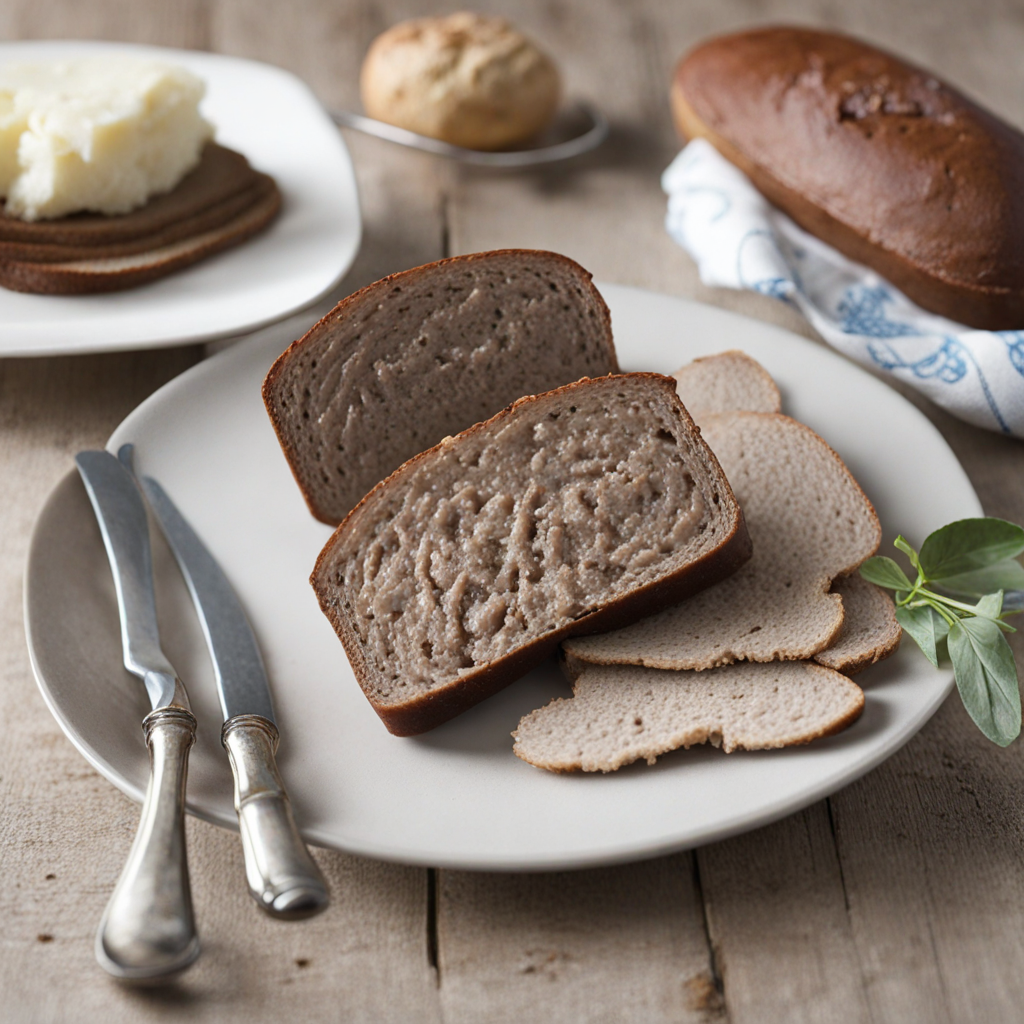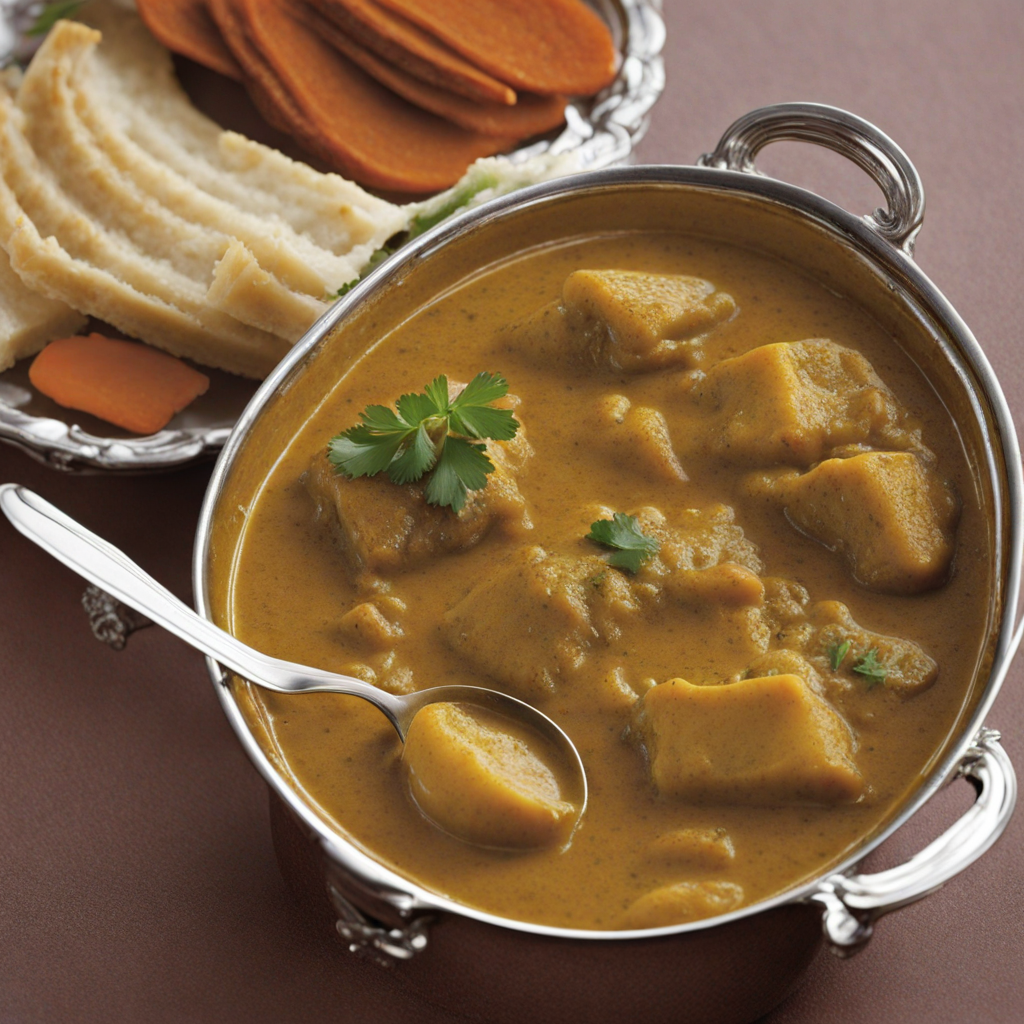Rødgrød med Fløde
Rødgrød med Fløde is a quintessential Danish dessert that embodies the essence of Scandinavian simplicity and freshness. This vibrant dish is primarily made from a mix of red berries such as strawberries, raspberries, and currants, which are cooked down to create a thick, luscious compote. The berries not only contribute a beautiful ruby-red hue but also impart a sweet-tart flavor that is both refreshing and comforting. The texture is smooth yet slightly chunky, offering a delightful contrast that keeps each bite interesting. The use of seasonal berries ensures that the dish bursts with natural sweetness, making it a beloved staple during the summer months when these fruits are at their peak.
How It Became This Dish
Rødgrød med Fløde: A Cultural Culinary Journey from Denmark Rødgrød med Fløde, often translated as "red porridge with cream," is a cherished Danish dessert known for its vibrant red hue and creamy topping. This dish, made primarily from red berries, sugar, and a thickening agent, embodies not only the flavors of Denmark's rich agricultural landscape but also reflects the country's cultural heritage and culinary evolution. #### Origins of Rødgrød The origins of Rødgrød can be traced back to the medieval period in Denmark, a time when berries were a significant part of the Scandinavian diet. The use of wild berries, particularly strawberries, raspberries, and currants, was common among rural communities who relied on seasonal produce for sustenance. The word "grød" translates to "porridge," a staple in the Danish diet, often made from grains or pulses. The blending of berries with a starchy base likely developed as a way to create a filling, nutritious dish that could be enjoyed during the warmer months when berries were plentiful. Historically, the dish was a simple peasant food, enjoyed by families who gathered wild berries during the summer and preserved them for the winter months. The technique of thickening the berry mixture with potato starch or cornstarch became a popular method, allowing the dish to be enjoyed in various forms throughout the year. #### Cultural Significance Rødgrød med Fløde holds a special place in Danish culture, often regarded as a symbol of traditional Danish cuisine. It is frequently mentioned in Danish literature and folklore, which speaks to its deep roots in the national identity. The dish is often associated with childhood memories, summer picnics, and family gatherings, evoking a sense of nostalgia and comfort. The phrase "Rødgrød med Fløde" itself has become something of a linguistic challenge for non-Danish speakers, often used humorously to highlight the complexities of the Danish language. This playful aspect of the dish has contributed to its status as a cultural icon, with many Danes taking pride in their ability to pronounce it correctly. Rødgrød is not only a dessert but also a representation of Danish values of simplicity and resourcefulness. It showcases the beauty of fresh ingredients and the importance of seasonal eating—a principle that remains central to Danish cuisine today. In a country where food sustainability and quality are prioritized, Rødgrød serves as a reminder of the importance of local produce and traditional cooking methods. #### Evolution Over Time As Denmark transitioned through various historical periods, including the Renaissance, the Industrial Revolution, and modern times, so too did Rødgrød med Fløde. In the 19th century, with the rise of the middle class, the dish began to evolve from a humble peasant food to a more refined dessert, often served at special occasions and festive events. Cookbooks from this era began to feature Rødgrød, offering variations that included additional spices such as vanilla or cinnamon, and even the incorporation of other fruits. The 20th century saw Rødgrød med Fløde becoming a staple in Danish households, with its popularity solidified through the advent of modern refrigeration, which allowed for the preservation of berries beyond their natural season. This accessibility led to the dish being enjoyed year-round, rather than just in the summer months. Additionally, the introduction of packaged products like fruit preserves and instant pudding mixes provided new ways to prepare Rødgrød, making it easier for busy families to enjoy this traditional dessert. In contemporary Denmark, Rødgrød med Fløde has experienced a renaissance, particularly amid the growing interest in traditional and artisanal foods. Chefs and home cooks alike have revisited the dish, experimenting with modern twists while honoring its classic roots. Some variations include the use of different berries, such as blueberries or blackberries, and innovative toppings like whipped coconut cream or a drizzle of berry coulis. #### Rødgrød Today Today, Rødgrød med Fløde is often served at celebrations, from birthdays to national holidays, and it remains a staple in Danish summer cuisine. It is not uncommon to find it featured at summer festivals, community picnics, and even in high-end restaurants that seek to honor traditional Danish fare. The dish has also gained international attention, with food enthusiasts and chefs outside of Denmark recognizing its unique flavor and cultural significance. The dish's continued popularity is also linked to Denmark's growing reputation as a culinary destination. The New Nordic Cuisine movement, which emphasizes local ingredients and traditional methods, has further elevated Rødgrød as a symbol of Danish culinary identity. This movement encourages chefs to reimagine traditional dishes while staying true to their roots, allowing Rødgrød med Fløde to remain relevant in the contemporary culinary landscape. Furthermore, the dish has found its way into popular culture, appearing in Danish media and becoming a topic of conversation among food bloggers and influencers. This renewed interest has sparked a wave of creative interpretations, with variations that cater to dietary preferences, such as vegan or gluten-free versions, ensuring that Rødgrød remains accessible to all. #### Conclusion Rødgrød med Fløde is much more than just a dessert; it is a vibrant representation of Danish culture, history, and culinary evolution. From its humble beginnings as a peasant dish to its status as a beloved national delicacy, Rødgrød encapsulates the values of simplicity, resourcefulness, and seasonal eating that are central to the Danish way of life. As Denmark continues to embrace its culinary heritage while adapting to modern tastes, Rødgrød med Fløde will undoubtedly remain a beloved symbol of the country’s rich gastronomic history for years to come. Whether enjoyed in a traditional manner or reimagined in contemporary cuisine, this delightful red porridge with cream will always evoke memories of summer, family, and the joy of sharing good food.
You may like
Discover local flavors from Denmark


